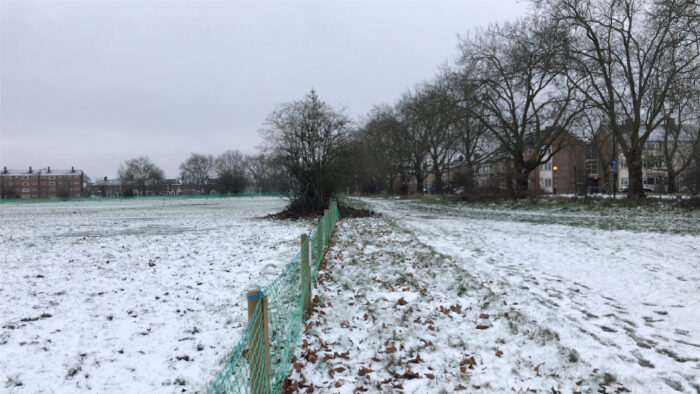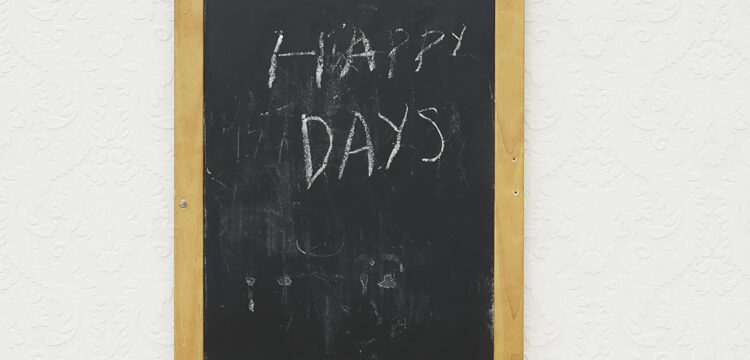Drifting Beyond Enclosure
On Harun Morrison’s “Welcome to the Epping Forest”
Nieuwe Vide presents the third part of the trilogy All that you touch, you change with the solo-exhibition of artist-in-residence Harun Morrison titled Mark the Spark. Morrison addresses notions of maintenance from multiple angles through video, photography, sound and sculpture. The artworks will focus on boat-living and the maintenance of municipal forest land, specifically Epping Forest and Wanstead Flats, green spaces local to the artist’s studio in London.
If parts of a wooden ship are replaced one by one, until all the original components have been substituted, is it still the same ship? This thought experiment, referred to as The Ship of Theseus, was notably published by the Ancient Greek historian and essayist Plutarch in the 1st Century CE. This question, alongside documentation of different kinds of chemical and cultural sparks, are the anchors of this project. These sparks range from the embers of fireworks, to recent civc protests, to the figure of the “sparkie” (informal English slang for an electrician) in particular Mark The Spark who has been working to repair the electrics and solar panels on Morrisons boat.
Harun Morrison’s video work Welcome to the Epping Forest (2022), currently presented as part of his solo exhibition Mark the Spark at Nieuwe Vide in Haarlem, documents the temporary commandeering of part of Wanstead Flats. From March 2020, this area of parkland, located on the southernmost tip of the forest, became a site for a prefabricated mortuary during the pandemic.

The work points to the forest’s long history of public use. From the seventeenth century onwards, commoners retained ancient right to common pasture and cattle grazed the unenclosed flats. In the latter half of the nineteenth century, landowners began to enclose the area. Protesters responded by gathering on the flats and destroying erected fences. The City of London Corporation took the landowners to court and won. The Epping Forest Act (1878) preserved the flats as an essential public amenity. For Morrison, whose studio is located alongside the area in the Old Manor Park Library, the Wanstead Flats is “a memory landscape of many an East End teenager, for late night drinking, taking mushrooms and burning tyres.” It remains essential to the liveliness of London’s otherwise stringently managed public life. Morrison’s video engages these layered histories of contestation and the generally precarious status of the commons, especially during periods of emergency.

There is a sense of the circadian; neither pastoral nor idyllic, but lived. Morrison produced the work while living on-and-off a boat docked on the Regent’s Canal. And it is from this unsettled perspective that he comes to film the grounds of the Wanstead Flats. During the period of filming, Morrison was informed by a security guard that the mortuary was never used. The prefabrications supposedly remained empty, holding space. In the first section of the video, the mortuary is cornered off by a solid wooden fence, functioning as what Avery Gordon calls a “seething presence,” an entity which makes its presence known by way of its absence. Long, still shots register all that surrounds the enclosed mortuary—the stirring of grass in the wind, the billowing of blossoms and the shifting direction of seasonal light. Trucks rumble ominously along the length of the solid interior wall, barely visible above its height. A man jogs along the fence as the prefabricated rooves gleam hauntingly white in the shimmering summer light.

Six minutes into the video and the camera jolts along the perimeter of the mortuary’s fence as the camera holder runs the length of its boundary, thrown from wall to asphalt to turf. In this jarring movement and, contrary to the tradition of the English pastoral, there is no vista, only a disorienting close-up of the fence. In the second half of the video, Morrison tracks the impression made by the now-removed prefabricated architecture and the vegetal life laid dormant beneath it. The video cuts to bare ground, enclosed by bright green plastic mesh strung between wooden stakes. The work’s long, still shots depict seasonal change—throughout there is a sense of sculpting time with a fluency facilitated by Morrison’s watery lexicon. Islands of snow sweep the area in winter. The camera focuses on a patch of ground obscured below a sheet of ice. A horse and carriage-led funeral procession flow past the area. A municipal worker rolls a cylinder of turf across the field, amidst waves of cut grass. A sea of grassland sways in the setting sun.

Here, the space between person and place is conceived of as necessarily relational and inflects the atmosphere of the video with a kind of ambience, a drift between inner landscape and external setting. “In thinking of ourselves as such assemblages as we move through these sites,” Morrison writes in the text to an accompanying photo essay, “we might recognise that the sites move through us.” The word ambience derives from the Latin ambo meaning “on both sides.” For Timothy Morton, it “can refer to the margins of a page, the silence before and after music, the frame and walls around a picture.” It is within these margins, these oscillations beyond the frame, where Morrison finds poignance and wherein enclosure is most presciently challenged.

The work is indicative of the artist’s more general concern for common ways of living and being and cultivates a relation to place unfolded both temporally and spatially. Morrison proposes an understanding of property conceived of as determinedly beyond enclosure. Now and not documented by the video, the Flats is a blooming sea of cornflowers, goat’s beard, meadow peal, corn marigold, cow vetch and chamomile. Welcome to the Epping Forest concerns regional site—the maintenance, precarity and vitality of municipal, shared land. And yet the vocabulary for understanding this earthly domain, especially in the context of the exhibition at Nieuwe Vide, is through a grammar of water, of drift.



